‘I hope that my art celebrates place’: City’s buildings, history inspire artist James Billiter
Framed prints of Cincinnati landmarks cover the walls of James Billiter’s studio. Precise, two-dimensional renderings of the Roebling Suspension Bridge, Union Terminal, Music Hall, a mix of Victorian and Art Deco architecture in striking black and gold with a vein of turquoise running through.
They could be vintage posters announcing the opening of the new Carew Tower or advertising one of the city’s many international expos.
But they are Billiter’s own designs, inspired by his passion for Cincinnati’s culture and history. The city is his muse.
A graphic designer by trade, he developed his own style of architectural illustrations coupled with stylized typography that emulates the appropriate era.
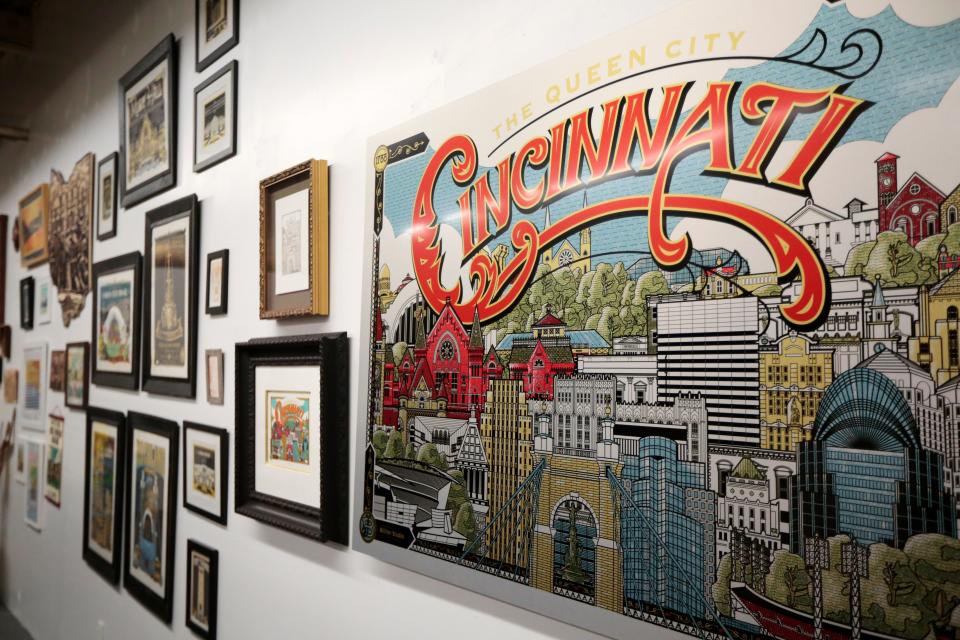
“It’s nice to tinker and expand and experiment with different aesthetics and maybe slightly evolve,” Billiter said from his space at Essex Studio in Walnut Hills. “I call it fine design, where you’re elevating graphic design and making it more about artwork.”
In his hands, Cincinnati appears classy yet fresh. What he hopes are inspiringly beautiful graphic art pieces that really capture the landmarks. His goal is to create affordable art prints that can be accessible to everyone.
“There’s been times, especially like 15 to 20 years ago, we weren’t as proud of where we lived as much,” Billiter said. “There was less excitement around our community. I remember feeling that and wanting to move away, but then once I stayed here really wanting to make the city better, if possible, or make people proud to live here.
“So I hope that my art celebrates place, and then if you’re proud of where you live, maybe you’re more proud of who you are and contribute to your community more. So that’s kind of the underlying theme.”
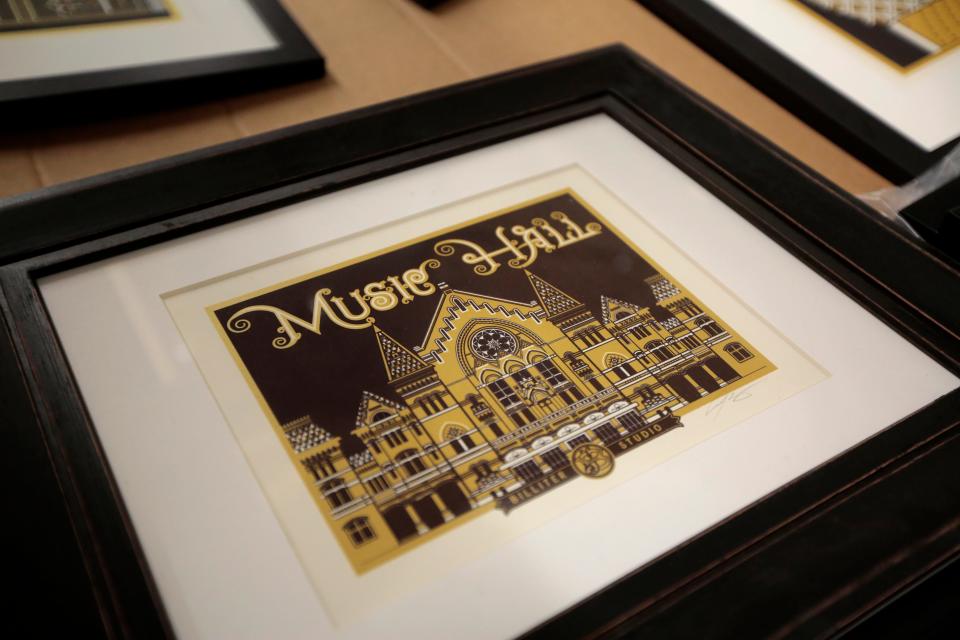
New and old ways merge
In the computer age, when posters can be digitally printed in seconds, Billiter works old school, screen-printing each layer of color one at a time by hand. But that doesn’t mean he shuns modern technology.
He sketches either with pen and ink or on an iPad, then tightens up the drawing on the computer, which gives him the precision he needs and allows him to undo any mistakes.
New and old, at the same time: Images drawn and honed in the computer, then printed using a method that dates back to the 1930s.
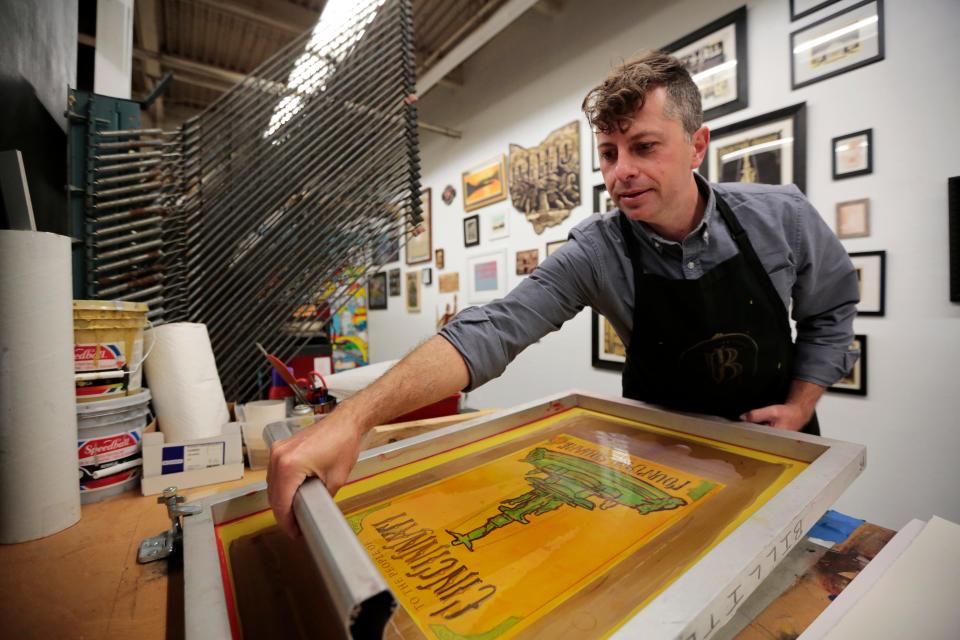
Billiter prepared a screen-printing set-up, a mesh screen stretched over a frame with the image of the 150-year-old Tyler Davidson Fountain. His drawing was printed on film like a photo negative, then exposed to an ultra-violet light, which caused a reaction in a layer of photosensitive emulsion coated on the screen and created a stencil.
For this batch of monoprints, Billiter hand-painted orange and verdigris green watercolor dyes onto the screen. He poured a line of transparent ink and spread it across the screen, then used a special squeegee to pull the ink through the holes in the mesh, transferring the ink – now infused with the watercolors – through the stencil to the paper underneath.
“It’s kind of a higher-end process,” he explained. “A lot of my larger editions use typical screen printing or letterpress, and this one you usually get maybe five out of it, so it makes it a little more precious.”
The printed image is imprecise, individual.
“That’s the interesting thing with printmaking,” Billiter once told CityBeat. “Each one you receive is both a duplicate and an original.”
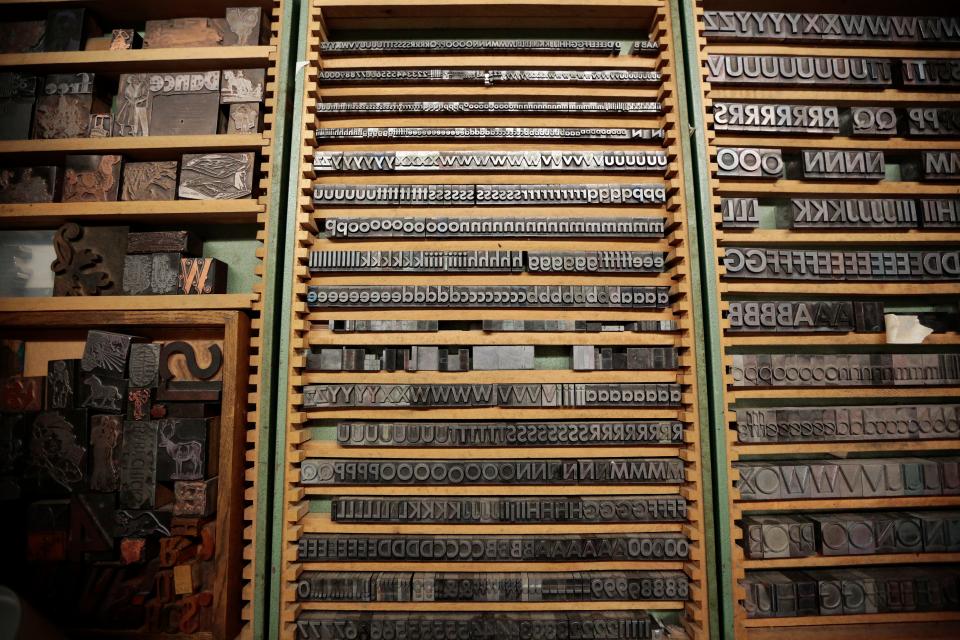
Layer by layer
Billiter, 45, lives in Madisonville and grew up there. He remembers taking trips with his dad on the Metro, epic adventures to downtown Cincinnati. Going to the observation deck at the top of Carew Tower, visiting Fountain Square and the holiday train display. That cultivated his interest in the city’s buildings.
A metal print of one of his most popular images is a tableau of Cincinnati landmarks, layered as though they were gathered to pose for a picture. Music Hall, PNC Tower and Great American Tower are joined by some surprises – the gazebo at Mount Storm Park, historic zoo buildings and UC’s much-maligned Crosley Tower, the single-pour concrete tower fluted at the top.
“I usually try to sneak that in as long as it’s there,” Billiter said of Crosley Tower, which is set to be demolished in 2025.
When he was 6 years old, he went to a pediatrician appointment near the campus and took notice of the tower. “It looks like a weird rocket ship smashed into the earth. That is what my little 6-year-old brain thought. I just love it,” he said. “I think that was one of the first times that I really thought about architecture. That architecture just wasn’t in the past but living, growing. It’s not just history.”
Another press of the ink creates another print with slight variations. No two are the same.
“It’s almost like when you stamp a stamp,” he said, “every time you print it becomes fainter and fainter.”
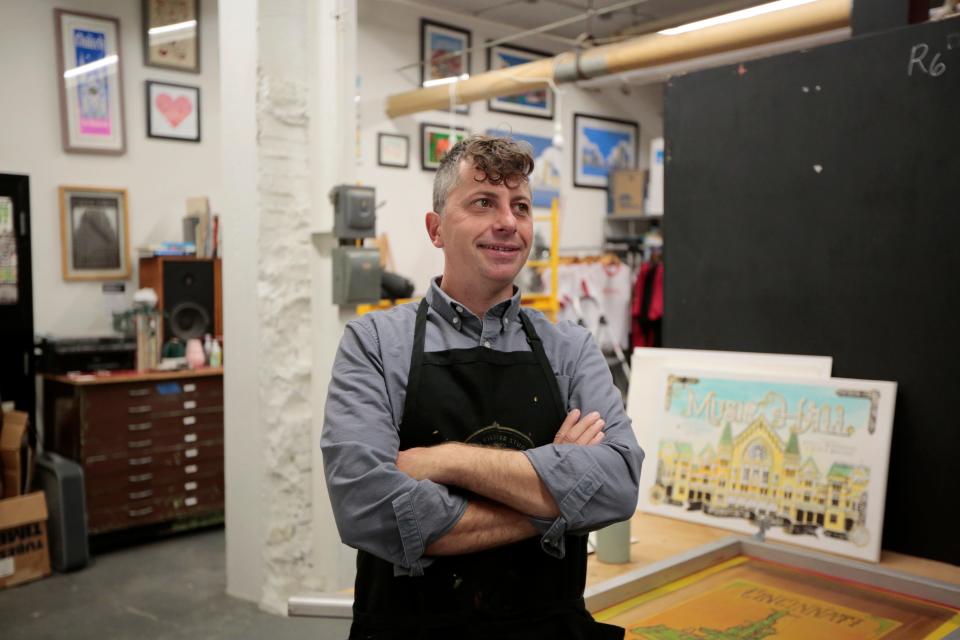
His mother was a stay-at-home graphic artist, and he watched her work with paste-up design in the days before computers. He used to sit on the floor of the studio and do his own projects.
“She was kind of like an art teacher, giving me something to do so she could focus on her projects and I was there in the studio with her,” he said. “I didn’t realize I was sort of following in her footsteps.”
Billiter earned a degree in design from the University of Cincinnati’s College of Design, Architecture, Art and Planning in 2001, then studied screen printing and letterpress in evening classes at the Art Academy of Cincinnati.
“It was about probably 2014 I really fell in love with the work and producing the work, and I think it was a way to share my passion for the city and obviously history,” Billiter said.
He used to bike commute and pass by the city’s landmarks up close, then go home and try to replicate them in his designs. He likens his images to Victorian posters, a callback to the city’s history with the Strobridge Lithography Company that printed world-famous circus posters, he said.
Old and new. Another printing of the fountain, fainter than the last.
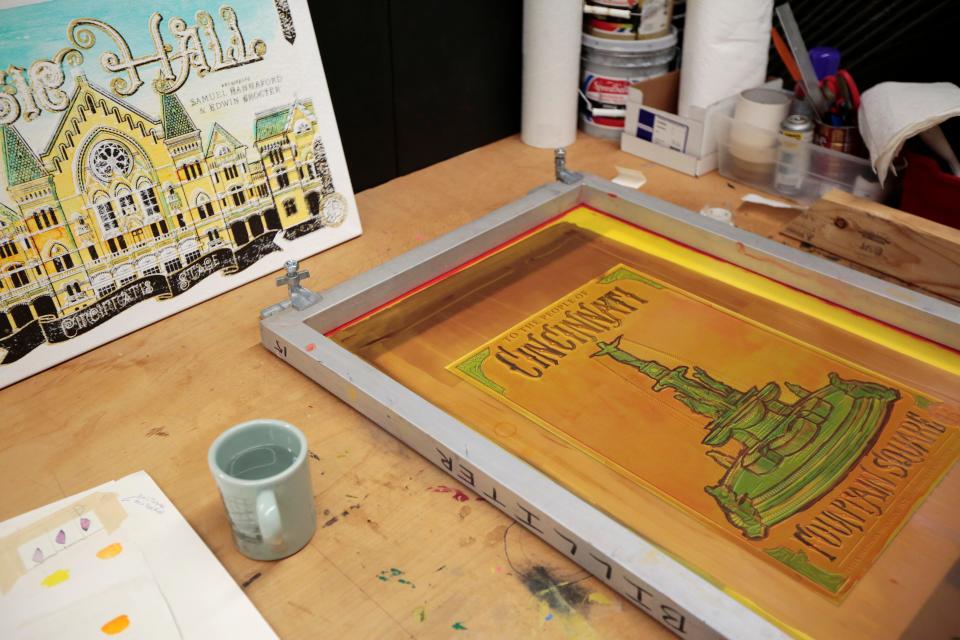
Pinned to the walls where Billiter creates his art are building sketches by Enquirer artist Caroline Williams and a print of E.T. Hurley’s “The Midnight Mass,” showing Immaculata Church in Mount Adams. The geometric animal designs of Charley Harper are another influence, Billiter said, inspiring his playful side, an homage to mid-century illustration.
That side comes through in some of his mural work. He recently collaborated with artists Maria Nacu, Michael Colbert and Anissa Pulcheon on a colorful community mural of East Walnut Hills.
“It’s such a reward to do public art,” he said.
Billiter goes back and forth between the two aesthetic worlds, one that is historic and formal, in dark colors and gold, the other that is modern and delightful. “Then it’s really fun to make things playful and just embrace the full rainbow of colors,” he said.
After four or five prints, the ink is not as effective. Like aged, weathered advertising.
Then the screen gets washed and scrubbed, readied for another print.
This article originally appeared on Cincinnati Enquirer: Cincinnati's buildings, history inspire artist James Billiter

